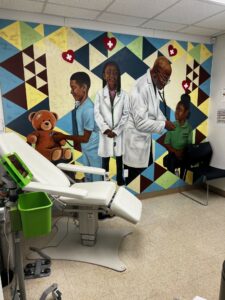Selecting a high-value partner
To ensure students receive high quality health care services, school-based health centers (SBHCs) partner with other agencies to sponsor their clinical and managerial operations. The level of support and individual/shared responsibilities of operating the SBHCs are typically defined in a written memorandum of understanding (MOU) between the SBHC or school district and its sponsoring agency. Sponsors provide support functions such as human resources, purchasing, training and leadership development. SBHCs may have more than one sponsoring partner.
Critical Contributions
Partnering with the right sponsor can make or break an SBHC program’s success. There are key critical sponsor attributes SBHCs must consider when searching for a high-value partner, including:
- Leadership Support–Identifying champions for school-based health care at the highest levels of the sponsor organization who will help assure that resources flow to the SBHC program.
- Mission and Vision–Direct alignment between the sponsor and SBHC’s mission and vision is vital to ensuring continued investment in school-based health care. Does the sponsor’s mission and vision focus on children and adolescents, prevention or integrated models of care?
- Location–A potential sponsoring partner has more interest in sponsoring an SBHC program that is located in its service area.
- Reputation–Sponsoring partners that are well respected within the community are more likely to draw support from the school and community, as well as positively influence the perception of service quality. Conversely, poorly regarded sponsors can negatively affect SBHC partnerships and utilization.
Most Common SBHC Sponsor Types
COMMUNITY HEALTH CENTERS
The nation’s federally-qualified health centers (FQHCs), also known as community health centers, are natural partners in school-based health care.
- The SBHC principles of ensuring health care access to underserved children and adolescents directly align with the FQHC mission of ensuring access to underserved populations.
- SBHCs understand the needs of underserved populations.
Because FQHCs are federally funded, FQHC-sponsored SBHCs have access to federal grants, enhanced reimbursement rates, and other federal safety-net protections.
HOSPITALS AND COMMUNITY HEALTH SYSTEMS
Hospitals and community health systems are often motivated to sponsor SBHCs as part of satisfying their federal non-profit requirements (often referred to as community benefit). To comply with these requirements, non-profit hospitals must invest a portion of their profits back into the community they serve. Hospitals view SBHCs as critical partners in:
- Reducing unnecessary child emergency department visits – especially those related to untreated asthma.
- Community outreach and marketing to build brand recognition among families and school faculty.
LOCAL HEALTH DEPARTMENTS*
The mission and vision of local or state public health departments across the nation is to improve population health and address the social determinants of health–systemic factors that impact a person’s well-being such as housing, education and economic stability. Because SBHCs are located within the intersection of education and health, they are seen as valuable partners in addressing the social determinants of health for children and adolescents. Public health departments view SBHCs as key partners in serving vulnerable populations by:
- Ensuring child and adolescent immunization compliance.
- Providing sexually transmitted disease testing and treatment services.
- Increasing health education outreach and prevention.
ACADEMIC MEDICAL CENTERS*
In addition to providing care, academic medical centers have a unique focus on innovation and developing the research base for evidence-based health care. They are often strongly embedded in the community and serve as safety net providers, making them uniquely positioned to serve children and adolescents in school. University medical systems view SBHCs as critical partners in:
- Achieving better health outcomes by providing comprehensive primary care services and continuity of care.
- Care coordination across primary care and specialty providers.
- Serving as professional training sites for students of nursing, medicine and dentistry.
BEHAVIORAL HEALTH ORGANIZATIONS
As health care payers and providers are being held increasingly accountable for ensuring patient-centered care, there is a growing movement to integrate behavioral health services within a primary care setting. Behavioral health organizations view SBHCs as critical venues for integrating and offering behavioral health and primary care services to children and adolescents.
PHYSICIAN GROUP PRACTICES
Physician group practices view SBHCs as ideal models for delivering health care services to children and adolescents who otherwise may not have access to a primary health care home. Private pediatric physician groups located in communities where there are only 1-2 private practices view working in SBHCs as an ideal strategy to reach and serve the adolescent population.
*Public Health departments and government-run university systems meeting federal requirements may receive FQHC status and therefore have access to federal grants, enhanced reimbursement rates, and other federal safety-net protections.


